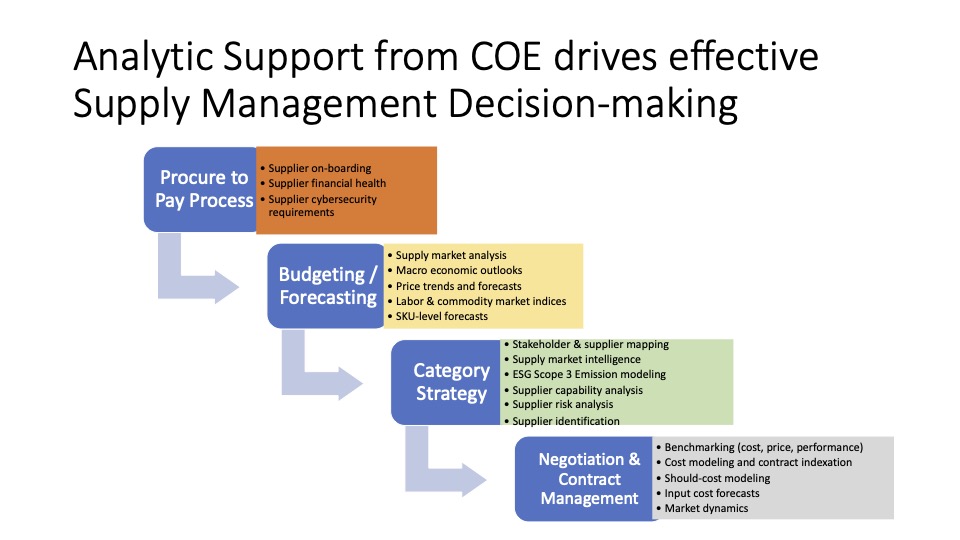Current issues facing supply chain managers in an era of uncertainty
I was recently asked about a few questions related to how managers should be navigating the waters around the tariff uncertainty, AI, contracting, and a host of other issues. Here are a few of my thoughts.
- Contract Enforcement: How might companies need to restructure force majeure clauses to accommodate future tariff-induced price fluctuations, and what litigation patterns could emerge if these clauses are tested?
Based on my experience, force majeure is not particularly helpful when it came to digging out of tariff-related events, because tariffs NOT an unexpected event. When Trump was elected, many expected tariffs to hit the Western world, so it was almost a certainty that there was going to have some impacts. For that reason, it is almost irrelevant when it comes to contractual negotiations after a disruption occurs. As a precaution, the Chinese government issued a wave of force majeure notices to protect their manufacturing base who were supplying Western firms, to prevent litigation.
In that respect, force majeure is a bit of a red herring. If there is a genuine force majeure, the parties could use impossibility as a basis for withdrawing from their contracts. We are really seeing the legal community, particularly external law firms, invoking impossibility. When disruptions occur, we need to find ways to work at this together, which can lead to a mutually aligned position around dealing with uncertainty.

- Regulatory Compliance: With rapidly changing trade regulations, where do you anticipate the highest litigation risk exposure for companies that may struggle to properly document compliance with new tariff requirements?
This will depend on the company. However, it is important to think through the scenarios that might occur through stress testing. Dynamic Supply Chain Stress Testing (DSCST) involves creation of a platform to continuously monitor and predict potential shifts across supply chains in real time. DSCST is more akin to continuous heart monitoring, such as using smartwatches or health apps, which provide immediate warning of shocks to your system, but also recommendations for health.
In a similar manner, DSCST employs continuous monitoring tools powered by AI and advanced analytics to predict the potential risks that might arise from sudden shifts in tariffs, labor disruptions, and weather events—which allow managers to plan ahead for disruptions before they happen. By employing scenario planning that responds to current events, managers can identify where they are vulnerable nd develop supply base continuity plans, as opposed to waiting for the next disaster to overwhelm them.
- Supplier Relationship Management: What legal strategies should companies consider implementing to distribute tariff-related costs across the supply chain, and how might these lead to potential contract disputes?
Effective legal strategies are especially relevant to manage supplier relationships in a period of major tariffs. We clearly witnessed how the retailers in the US that sent out mass force majeure notices to the owners of the properties they leased, telling them we won’t be paying the lease or abandoning it. Given the rapidly changing situation with tariffs, it is important to be in constant communication with suppliers to address and resolve issues, including how the tariff costs will be shared.
- Reshoring Complications: As companies potentially accelerate reshoring efforts to avoid tariffs, what transition-related litigation risks could develop between companies and their overseas suppliers?
Reshoring is not always possible. Significant inherent limitations prevented several companies we spoke with from changing their supply chain designs. While managers and scholars alike tend to assume that executives can and should make their companies agile, those in our study found that their access to resources and the existing structure of their supply chains severely constrained their pursuit of supply chain agility. During a disruptive period, the leaders of companies in industries with high fixed costs for existing facilities, as well as those with high regulatory oversight, can change their supply chain designs very little or not at all. Several executives explained that their suppliers were all located in one place and that the cost of moving them was prohibitive, nor could they find alternative suppliers. For one company, fixed costs and immobile suppliers made it difficult to respond to disruptions with agility. In the case of compound supply chain disruptions, these executives carry on as usual, hoping for the best.
- Inventory Management Liability: How might sudden shifts in inventory strategy (like stockpiling pre-tariff goods) create future litigation risk around storage contracts and fulfillment obligations?
The one-two punch of the US-China Trade War and inventory challenges has forced many companies to reduce product lines, factories, and sourcing locations. By simplifying, companies can become more agile while improving the visibility of inventory throughout the supply chain. This new visibility allowed company leaders to model how factory closures would affect assembling the final product and reroute production accordingly, and can also help plan inventory stock levels. By simplifying product portfolios, managers can improve standardization, lower inventory costs, and bring suppliers opportunities to cut costs too.
- Technology Implementation: As companies rapidly adopt supply chain technologies to offset tariff costs, what intellectual property and data privacy litigation trends could emerge?
Using AI is becoming a cybersecurity risk for many companies. When companies use programs such as ChatGPT, there is a risk that confidential data will be exposed to the internet.
Executives also all agree that creating a more agile and resilient supply chain required companies to invest strongly in improving their ability to track material in motion and in storage. As one astute executive put it, “You can’t manage what you can’t see.” Digital tools can alleviate many disruptions, allowing managers to identify blockages, quickly moving orders to different suppliers or facilities, and planning the mitigation of likely problems. Many also described using digital twins, detailed models of their supply chains, to map scenarios like the shutdown of a supplier in China or a port delay in Los Angeles.
- Labor Relations: How might reshoring efforts impact labor litigation risks in domestic markets as companies adjust staffing for new operations?
Many companies have begun to nearshore and are encountering challenges in staffing. Many current companies are struggling to retain workers with a 4.1% unemployment rate. Some companies have begun using a source in Mexico to supply customers in the US, but this requires a company to invest in assessing suppliers, contracting, minimizing logistical risk, and planning the movement of materials across the border. Companies that use domestic suppliers do not face these issues, or at least they are significantly less complex.
- Insurance Coverage: What gaps do you foresee in current supply chain insurance policies that might fail to address tariff-induced disruptions, potentially leading to coverage litigation?
Insurance policies may not cover tariff-related costs, as this is not a benefit covered. Many also do not cover supply chain shortages and disruptions.
- Environmental Compliance: How could changing supply chain routes to avoid tariffs create new environmental compliance risks and resulting litigation exposure?
There are major costs being incurred by ships landing at US ports, which are Chinese freighters. Each port landing will cost $1M per call. This is an issue which may cause companies to question whether shipping direct to US ports will work, and may elect to use shipments from a port in Canada or Mexico. This will increase the carbon footprint for logistics.
- Consumer Protection: What deceptive trade practice claims might arise if companies cut corners to maintain margins in the face of continued tariff pressures?
Some companies may seek to exploit tariffs to artificially increase prices. Such behavior will undoubtedly result in poor customer relationships.
Contracts and supply chain relationships of the future should include revisions around dealing with uncertainty and how that may alter the nature of payment terms. This could be no more than a behavioral commitment for parties to sit and work together to reevaluate the situation and re-set terms.
- Categories:
- Articles
- Artificial Intelligence in Supply Chain
- China Supply Chain
- Digital Supply Chain
- Director's Blog
- Emerging Issues in Supply Chain
- FLOW: How the Best Supply Chains Thrive
- Supplier Relationship Management
- Supply Chain Cybersecurity
- Supply Chain Economics
- Supply chain Relationships
- Supply Chain Risk
- Supply Chain Strategy
- Working Capital Management

